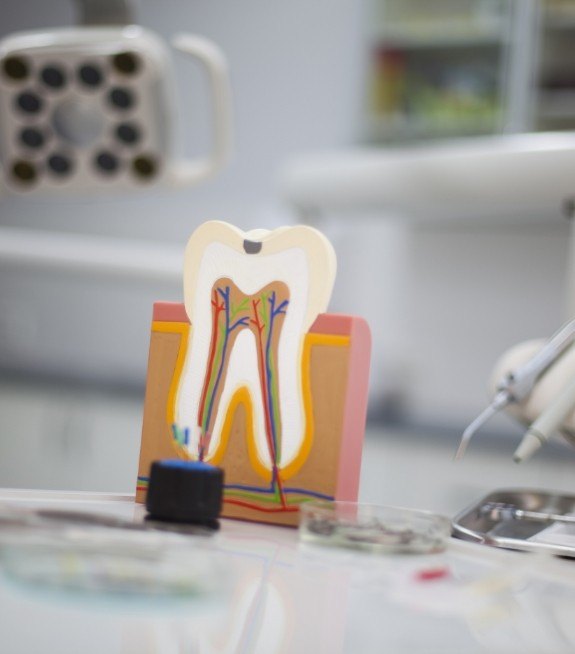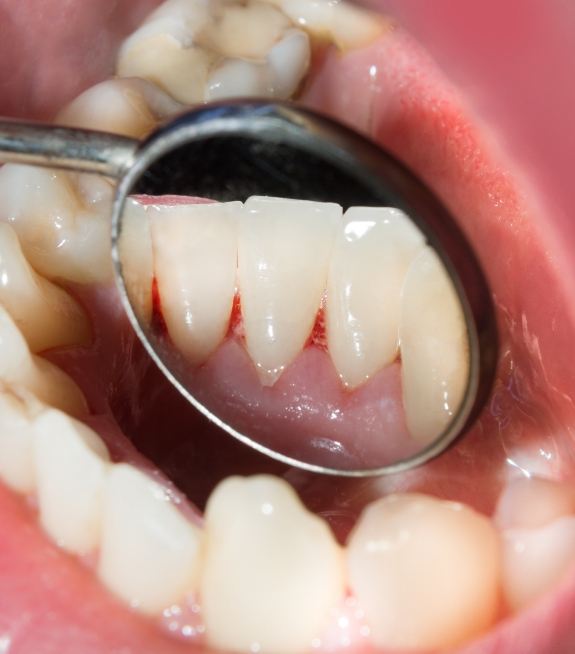Periodontal Therapy Corpus Christi
High-Quality Periodontal Treatments for Gum Disease
Gum disease often develops without pain or other obvious symptoms. Consequently, many people don’t realize that they even have it until it has already reached its advanced stages. To minimize the risk of tooth loss and other health issues, it’s essential to have gum disease diagnosed and treated as early as possible. Reach out to South Texas Periodontics & Implants today to schedule a consultation with Dr. Garcia if you or your dentist have noticed signs that you may have gum disease and could benefit from advanced periodontal therapy in Corpus Christi.
Why Choose South Texas Periodontics & Implants for Periodontal Therapy?
- Experienced Board-Certified Periodontist
- State of the Art Periodontal Technology
-
Friendly,
Knowledgeable Staff
What Is Gum Disease?

Gum disease is essentially a condition where the gum tissue and bone supporting the teeth become infected. The earliest stage of gum disease, gingivitis, is relatively mild and can often be reversed with a good oral hygiene routine. However, if gingivitis is left alone for too long, it can turn into periodontitis; at that point, the gums may start to recede, and the teeth could eventually loosen to the point that they might fall out altogether.
Periodontal Cleanings

Oftentimes, a regular cleaning won’t be enough to keep gum disease under control. Instead, you may need to come in for a periodontal cleaning once every three to four months. We will remove the plaque and tartar that are contributing to gum disease; our main focus will be the spaces between your teeth and the area under the gum line. Note that unlike a regular dental cleaning performed to prevent oral health problems, periodontal cleaning is mainly done to prevent existing gum disease from growing worse.
Periodontal Diagnostics

To determine whether you have gum disease, we perform a thorough examination of the mouth to look for plaque and tartar buildup as well as telltale symptoms such as easy bleeding. We’ll also measure the depths of the pockets between the teeth and the gums. Normally, these pockets are between 1 and 3 millimeters; if they’re 4 millimeters or deeper, they may indicate the presence of periodontitis. Once we’ve made our diagnosis, we can put together a treatment plan based on your needs.
Scaling & Root Planing

If you're dealing with gingivitis (the initial stage of gum disease), improving your oral hygiene could be what’s needed to restore your smile. For more advanced forms of gum disease, a procedure called scaling and root planing may be necessary. Also known as dental deep cleaning, scaling and root planing aim to address gum infections directly, eliminating the need for invasive surgery. To learn more about this procedure, simply click on the button below!
Do I Need Scaling & Root Planing?

During the initial phases of gum disease, conservative measures may help reverse the condition. Simple adjustments to your brushing and flossing routines could restore your oral health. However, if the issue progresses, scaling and root planing may become necessary.
Look out for these indicators, which suggest it's time to consult your dentist:
- Easy bleeding of your gums during brushing
- Redness and swelling of your gums
- Persistent bad breath
- Noticeable plaque accumulation along your gumline
- Receding gums
The Process of Scaling & Root Planing

Scaling and root planing are the two major steps of the deep cleaning treatment that is performed to stop gum disease from growing worse. Scaling is the process of removing tartar and bacteria from the gums. Root planing, meanwhile, involves smoothing the surfaces of the tooth roots. This is done because it is harder for bacteria to cling to smooth surfaces. It also encourages the gums to heal and potentially reattach themselves to the roots.
Aftercare Tips for Scaling & Root Planing

Following a scaling and root planing treatment, it may take a few weeks for your gums to return to normal. To minimize sensitivity and discomfort during this period, consider the following tips:
- Rinse your mouth regularly with warm saltwater
- Gently brush and floss your teeth
- Steer clear of spicy, acidic, hot, and cold foods
- Stick to a soft diet for at least 48 hours after your appointment
Oral Cancer Screening

While examining the mouth for signs of gum disease, we might find unusual symptoms such as lumps and discolored patches. Oftentimes, such symptoms are a sign that a patient might have oral cancer – a potentially deadly disease that kills roughly one person per hour. Your chances of a complete recovery will be much better if you begin treatment as soon as possible; as such, if we have any reason to think you have oral cancer, we will recommend having a biopsy performed.

